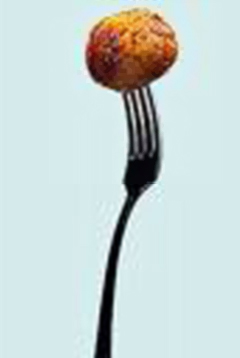
Ever heard that expression? It is a crude update of "You can't make a silk purse out of a sow's ear." Whichever is your favorite aphorism, they mean the same: some things are impossible by their nature.
"Reform" means changing structure while leaving substance or essence intact. For healthcare, it is its essence that makes it fail. It is the system itself that is broken. Reform would keep it as is with minor modification. In other words, reform does not address the real problem. The healthcare system must be REPLACED, not reformed.
Lack of "connection" in healthcare system
You do not need a PhD in Economics to understand supply and demand. The seesaw that keeps them in balance is called money exchange. If demand goes up and supply does not, then the price goes up. This dampens demand and balance is restored.
If supply is high, the price goes down. When things are cheap, people buy more. That raises demand (to the level of supply) and again you have balance, because the supplier and demander are connected.
The fancy phrase for this balancing act is micro-economic connection: supplier (producer or the person who provides service) and demander (consumer or buyer) are connected by money.
Once you understand this, you can see why both the President's and the Republicans' reform of healthcare will produce fixes-that-fail. All they are doing, to use another well-worn aphorism, is rearranging deckchairs on the Titanic. (That ship has already sunk; the USS Healthcare is on its way to join her.)
In healthcare, who consumes? The patient.
In healthcare, who pays? Insurance or government.
In healthcare, who drives the cost? The doctor.
Question: what connects these people - consumer, payer, and cost-driver?
Answer: nothing! Consumer does not pay supplier (disconnected). Payer has very strong incentives not to pay the cost-driver (disconnected again).
Question: who has any incentive to economize and how might he do it?
Answers: Consumer has no reason to economize (money is not coming out of his pocket) and has very little ability to do so. Cost-driver (doctor) has contradictory incentives: under fee-for-service, incentives encourage unnecessary tests and procedures. Under HMO control, incentives encourage withholding of necessary tests and procedures. Payers want to enroll consumers (to get premiums) and NOT pay for care because by not paying they make profit. This is as true for government as for private insurance, as long as healthcare payments are considered short-term line cost items instead of the infrastructure investment that it is (or should be).
What we have now is unlimited demand with no counterbalance. What has changed is that patient and provider have become competitors (for dollars). What we suffer through are incentives that encourage (by paying for) the very things we do NOT want.
How will proposed "healthcare reforms" solve any of these problems? Will a new insurance Program (Democrats) fix this? What about tax breaks and "insurance pools" (Republicans)? Who believes that big insurance can, much less will, cut $2 trillion from national healthcare payments (to them)? Where is organized medicine in all this? Why are they not advocating for us and for what we need: affordable, accessible, quality health care?
What the government and the pundits are offering us - so-called healthcare reform - is snake oil, not real solutions. Face it: we need a new system. We need replacement, not reform. We need a transplant, not cosmetic surgery.
Healthcare needs replacement, not reform.